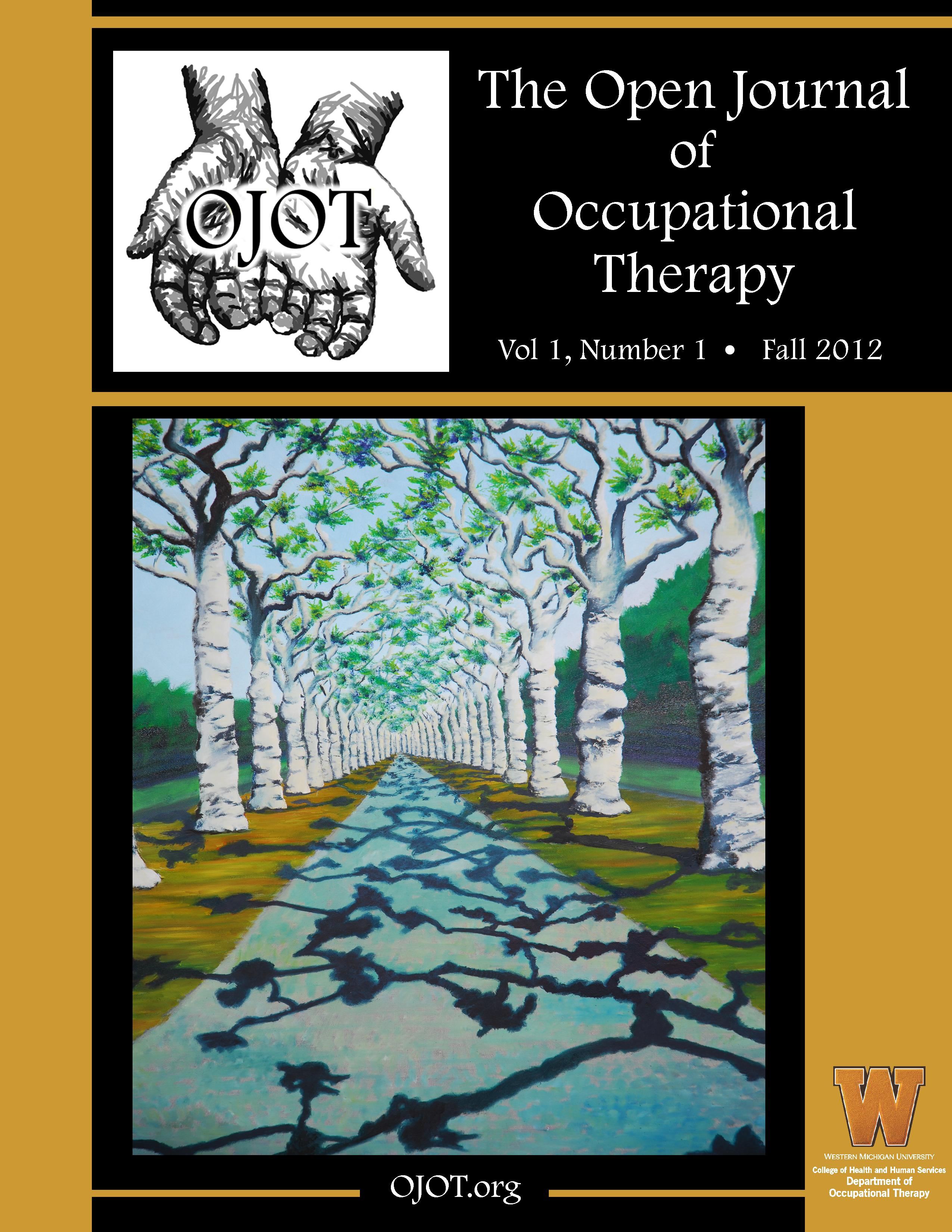ScholarWorks > HHS > OT > OJOT > Vol. 10 > Iss. 1 (2022)
Credentials Display
Tiana Nguyen, OTD, OTR/L; Lisa Choromanski, OTD, OTR/L; Tatiana Kreuzer, OTD, OTR/L; Jamie Stroppini, OTD, OTR/L
Abstract
Background: The MusicGlove® as an occupational therapy intervention has been shown to improve upper limb function and satisfaction over conventional therapies for adults who have had a stroke, however, its effectiveness with children who have cerebral palsy has not been examined. The purpose of this research was to explore the feasibility of a virtual, home-based MusicGlove® protocol to increase upper extremity function, quality of life, and internal motivation in children with hemiparetic cerebral palsy.
Method: Three participants, ages 6 to 16, diagnosed with hemiparetic cerebral palsy participated in 23 guided sessions using the home-based MusicGlove protocol over 5 weeks. Functional outcomes, quality of life, and intrinsic motivation were measured using the ABILHAND-Kids, Cerebral Palsy Quality of Life, and Intrinsic Motivation Inventory.
Results: Two participants had an increase in percentages of notes hit (13%–20%) following the MusicGlove® intervention. All three participants rated the MusicGlove® as being of value/usefulness and two reported interest/enjoyment in using the MusicGlove®. All three participants and their caregivers reported an increase in quality of life and decrease in perceived difficulty of daily activities.
Conclusion: The virtual, home-based MusicGlove® protocol may be a feasible intervention to improve hand function for children diagnosed with cerebral palsy.
Recommended Citation
Nguyen, T., Choromanski, L., Kreuzer, T., & Stroppini, J. (2022). Exploring the Feasibility of a Virtual, Home-Based MusicGlove® Protocol for Children with Hemiparetic Cerebral Palsy. The Open Journal of Occupational Therapy, 10(1), 1-15. https://doi.org/10.15453/2168-6408.1836



Comments
Disclosure: Flint Rehab donated 4 MusicGlove® devices (3 to research participants, and 1 to researcher Tatiana Kreuzer) to test the device. Devices were used for the study and kept by recipients afterwards. Flint Rehab also allowed the research team access to the beta version of Tenovi for the duration of the study.